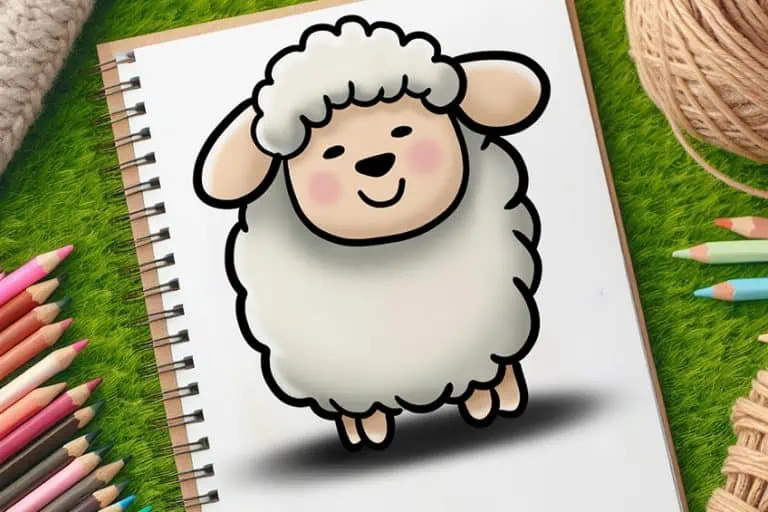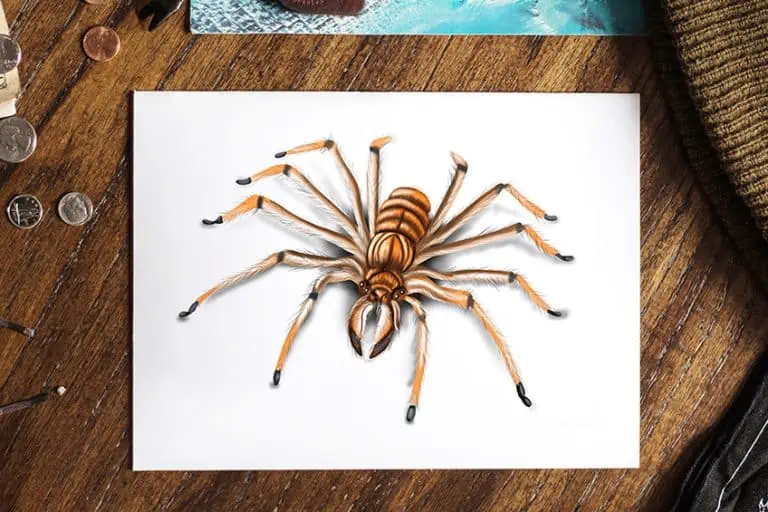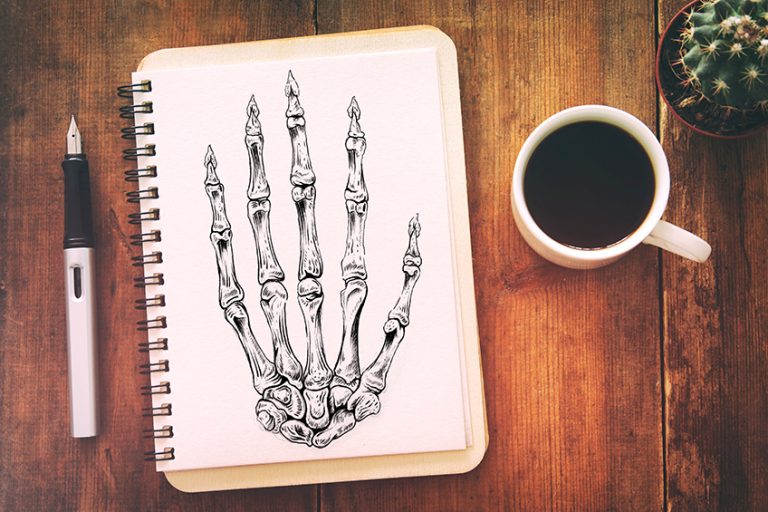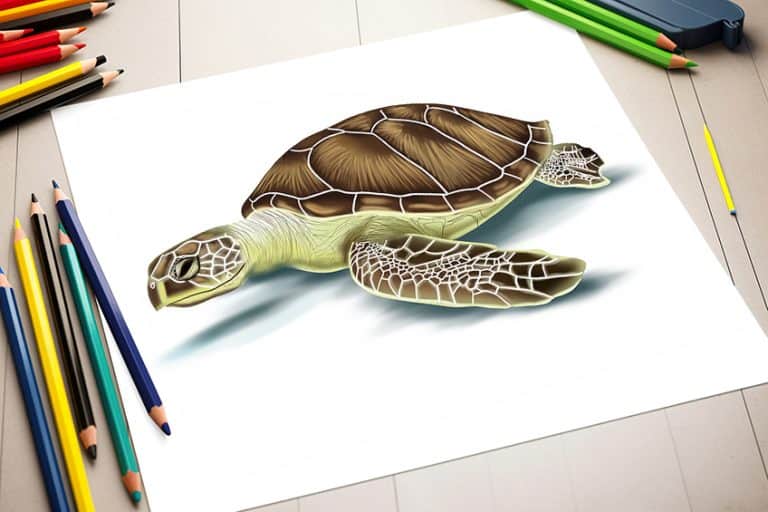What Is Drawing? – A Detailed Guide to the Drawing Definition
This post may contain affiliate links. We may earn a small commission from purchases made through them, at no additional cost to you.
What is drawing and what is its historical significance? Drawing is the form of art most familiar to the majority of people, and even if you have never touched a paintbrush, chances are that you adorned the walls of your crib with crayons as a baby, and doodled in your notebooks in school as a child. Drawing artwork requires very few tools – just a pencil or pen and a surface, which makes it a very affordable and accessible form of art to create with. Let’s look at the drawing definition and learn about the basics of drawing, as well as the and the various types.
Table of Contents
What Is Drawing?
Like painting, drawing is a form of two-dimensional art, where one uses various lines, tones, and shading to produce images on materials such as paper or canvas. Drawings differ from paintings in that they typically utilize dry media such as charcoal, pastels, and pencils, although ink can also be used, which is a wet media. In the art world, drawings have traditionally been used as a way of solving specific observational and technical issues, allowing artists to test out arrangements and postures with preparatory sketches before committing to paint or sculpture.
Historical Significance of Drawings
Drawings have been used throughout history as a way to communicate ideas and test out concepts. Drawings became an essential tool for artists during the Renaissance to improve their abilities and develop their ideas. Drawings were used by artists to organize their compositions, play around with various techniques, and produce studies of the human physique and other objects around them.
During this period, drawings were also employed to document scientific discoveries and observations, which aided in the advancement of our understanding of subjects like botany, anatomy, and astronomy.

Drawings still serve a variety of functions in the Modern era. In architecture and engineering, for instance, they are used to design structures and buildings, while in fashion design, they are used for producing prototypes of apparel. Drawings are also used in schools, and students are often required to produce drawings in geography, physics, and biology in order to gain a better understanding of certain topics.
The Basics of Drawing
What does one need to start drawing? Sure, you can just pick up any pencil and start scribbling on a piece of paper – and over time you will definitely improve – but there are some basic techniques that you can use that will greatly improve your drawings. It also helps to have a decent understanding of certain drawing principles, such as perspective, line, and form. Let’s start with the required tools and materials.
The Tools and Materials of Drawing
Pencils are most likely the most frequently used drawing tools, and they come in a variety of hardness levels. Pencils are usually used for sketching, shading, as well as outlining. Erasers are used to rectify errors or remove undesired markings. There are several varieties of erasers, such as kneaded and gum erasers. A variety of materials, including sketch paper, watercolor paper, and Bristol board, can be used for drawing. Another popular drawing medium is charcoal, and it is frequently used to create expressive as well as bold drawings. Ink is another popular drawing medium, especially for illustrations and line drawings.
Markers are used to create strong, vibrant drawings and are available in a range of different colors and tip sizes.

The Basic Techniques of Drawing
There are many different techniques that artists use to create engaging and interesting drawings. One technique is shaped-based drawing, which allows the artist to establish the composition of a drawing using simplified shapes. This is a great technique to apply before adding details to help get the arrangement of the various elements of your drawing worked out.
Armature drawing is a technique in which a simple, rough line drawing is used to define the fundamental proportions of the subject, which will then subsequently be designed further with more detail.

The Subtractive drawing technique involves eliminating material from a drawing, such as scraping away paint layers or erasing charcoal, to produce a work that emphasizes the negative space. Tonal Drawing is the use of contrasting hues of light and dark in a drawing to give the appearance of depth and form.
Understanding Drawing Principles
When making a drawing, it helps to have an understanding of certain art elements and principles. These include line, shaper, perspective, and form. The most fundamental element of drawing is the line, which may be used to define the borders of forms, create textures, and communicate expression as well as convey movement. Artists are able to add interest to their sketches by learning how to employ different sorts of lines, like straight or curved lines, and continuous or broken lines. Shapes, in turn, are defined by the lines, and they may be utilized to produce volume and form.
You will be able to create complex compositions that are aesthetically appealing and fascinating by learning how to effectively use different shapes in your drawings such as circles, squares, and triangles.

The three-dimensional characteristic of objects is referred to as form, and it is produced by utilizing light and shadow to give the appearance of depth and volume in your drawing. You can easily improve the appearance of your drawings by learning how to properly use shading techniques to produce highlights, mid-tones, and shadows. The technique of creating depth and distance in a two-dimensional drawing is known as perspective. Artists are able to make three-dimensional and realistic drawings by learning how to apply techniques like foreshortening, vanishing points, and overlapping.
The Different Types of Drawing
There are many different types of drawing that you can explore as an artist. Artists have created drawings of traditional art forms such as landscape drawings, still-lifes, and portraits, as well as technical drawings and anatomical drawings. Drawings are also popular in newspaper cartoons and book illustrations.
Sketching
Sketching is distinguished by its loose, informal style and quick execution. Sketches are typically used to quickly capture ideas and experiment with different compositional options. These types of drawings are done fast, allowing artists to record their early impressions of a topic in a spontaneous manner.
They usually have little detail, with the artist concentrating on capturing the general composition and contour of a subject instead of minute details.
Charcoal Drawings
Charcoal drawing is a style of drawing that includes using charcoal sticks to produce a variety of textures and tonal values on paper. Charcoal is used to achieve a variety of effects, including light, delicate lines, and dark, powerful strokes. Because of this versatility, artists are able to produce a remarkably broad range of tones and textures in their works. Charcoal can provide a broad variety of tonal values, from very light grays to dark blacks. This enables artists to make drawings that are both dramatic and emotive. Charcoal drawings, unlike other drawing materials, are not particularly solid and can readily smudge or wipe off. You might need to employ fixatives or other ways to protect the drawing in order to preserve it.

Pen and Ink Drawings
Pen & ink artwork is distinguished by its preciseness and fine lines, making it ideal for creating extremely detailed and complicated drawings. When ink is put onto paper, it is permanent and cannot be easily wiped away or altered. To make a decent pen and ink drawing, one must have a particular level of expertise and confidence in one’s talents. Hatching, cross-hatching, stippling, and shading are all common techniques that are typically utilized in pen and ink drawings.
Each method produces a distinct texture and tone, allowing you to achieve a variety of effects in your works.
Pencil Drawings
Pencils can be used to achieve a variety of effects, including light and delicate marks as well as powerful and heavy lines. They may also be used to produce a variety of textures, ranging from smooth and even to rough and irregular. They can also produce a wide variety of tonal values, from light grays to deep blacks. This enables artists to produce extremely realistic and emotional drawings.
Because pencil is erasable, artists can easily correct their drawings as they work. This is advantageous for artists who are still honing their craft and may need to make adjustments as they go.

Colored Pencil Drawings
One of the distinct characteristics of drawing with colored pencils is the ability to layer the colors to achieve a variety of effects. Artists use layering to produce incredibly detailed and subtle drawings. Colored pencils can be blended easily using a number of techniques, including solvent blending. This blending helps artists to produce seamless color transitions as well as a feeling of depth and perspective in their works.
Color pencils can be used to create a variety of artworks, ranging from spontaneous sketches and studies to very detailed and life-like portraits, landscapes, and still lifes.
The Benefits of Learning How to Draw
People learn how to draw for many different reasons. Some learn it as part of formal art studies, others pursue it as a leisurely pass time. Let’s look at a few of the common benefits of drawing.
Increasing Your Creativity
You can learn to perceive the world around you in a new way by exercising and developing your sketching abilities, finding nuances and patterns that you may have ignored previously. This might spark fresh thoughts and insights that you can use in other aspects of your life. Drawing also helps you to see and physically explore and express your creativity and ideas.
This can be especially beneficial for individuals who have difficulty expressing themselves vocally or articulating their emotions verbally.

Learning to sketch can also aid in the development of problem-solving abilities. Drawing involves analytical and creative thinking, as well as evaluating and synthesizing information to produce a coherent and visually pleasing piece. This problem-solving method may be extended to various aspects of life, allowing you to approach issues with a more creative and adaptable perspective.
Relieving Stress
Drawing can often be a very meditative and calming pastime that can aid in stress reduction and general well-being. Drawing allows you to filter out distractions and focus on the now, which may be considered a type of mindfulness practice. This creative form of concentration can help alleviate tension and may even boost your mood. The act of drawing can also give you a sense of accomplishment and fulfillment, which can increase your self-confidence.
When you make something with your own hands, you often experience a strong sense of pride over your creation, which can serve to be a powerful emotional experience.

Drawing is also a good method of self-expression, both cathartic and therapeutic. You are to develop a better knowledge of yourself and your experiences if you create artwork that communicates your thoughts and emotions. This can be especially beneficial for individuals who have difficulty conveying their feelings or who have undergone trauma or other traumatic life experiences.
That wraps up our look at the various drawing artworks that you can create. We have given you some idea of what tools you will need, and the different types of drawing that you can explore and try out for yourself. There are many benefits to learning how to draw, so why not start your first drawing today?
Frequently Asked Questions
What Is Drawing?
Drawing is one of the most prominent forms of art, and also one of the oldest. Drawings have been used by artists for years to help prepare their compositions and to practice their techniques. Drawings are two-dimensional, yet there are various techniques that artists use to create the impression of depth.
What Is the Drawing Definition?
A drawing is an artwork composed of lines or regions of tone drawn on a sheet of paper, with a drawing tool like charcoal, graphite pencil, silverpoint, colored pencil, eraser, dry pastel, or another dry media. A drawing, in a larger sense, is a two-dimensional work formed from tone or lines that is dominated by a dry media, but can also contain wet mediums like washes of paint and ink.
Matthew Matthysen is a multidisciplinary artist. He completed his fine art degree, majoring in History of Art and Contemporary Drawing Practice at the University of Witwatersrand, South Africa. Before joining acrylgiessen In 2020, Matthew worked part-time as an art teacher at Reddford Blue Hills High school. Matthew creates drawing and painting tutorials for acrylgiessen and captures them not only photographically and in written form. He also records the creation of his works in his own creative studio as in video format, from which later with a voiceover and a video editor also drawing tutorials for the Youtube channel of acrylgiessen are created.
Learn more about Matthew Matthysen and about acrylgiessen.







